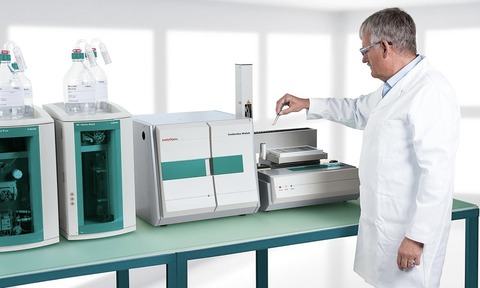
An application note from Metrohm describes a new method to determine adsorbable organically bound halogens, and its application for the analysis of AOF, providing a fast and economical solution for non-targeted PFASs screening.
DIN method 38409-59 describes the determination of adsorbable organically bound halogens by combustion ion chromatography (CIC) in different water samples. AOX and AOF analysis according to the new standard is performed in two steps; preconcentration of the adsorbable organic halogens on activated carbon, followed by direct combustion and subsequent ion chromatographic (CIC) analysis.
Organohalogen compounds are widespread, persistent, and potentially toxic for humans and the environment. However, the techniques commonly used to monitor adsorbable organic halogens (AOX) can only determine the sum of organically bound chlorine, bromine, and iodine. These techniques do not provide individual results for AOCl, AOBr, and AOI, respectively, nor on the organofluorine (AOF) content.
DIN method 38409-59 describes a validated method for comprehensive AOX analysis including AOF by CIC. Analysis by CIC allows the determination of the sum parameter as well as the individual concentrations of adsorbable organically bound fluorine, chlorine, bromine, and iodine in different waters.
Advantages of the new standard method include:
- Selective determination of AOF, AOCl, AOBr, and AOI in waters
- AOF as fast non-targeted screening for PFASs
- Efficient and low-maintenance AOX determination
- Easy-to-use, robust, and efficient
Further information on the application in Application Note AN-CIC-033 or White Paper WP-078.




